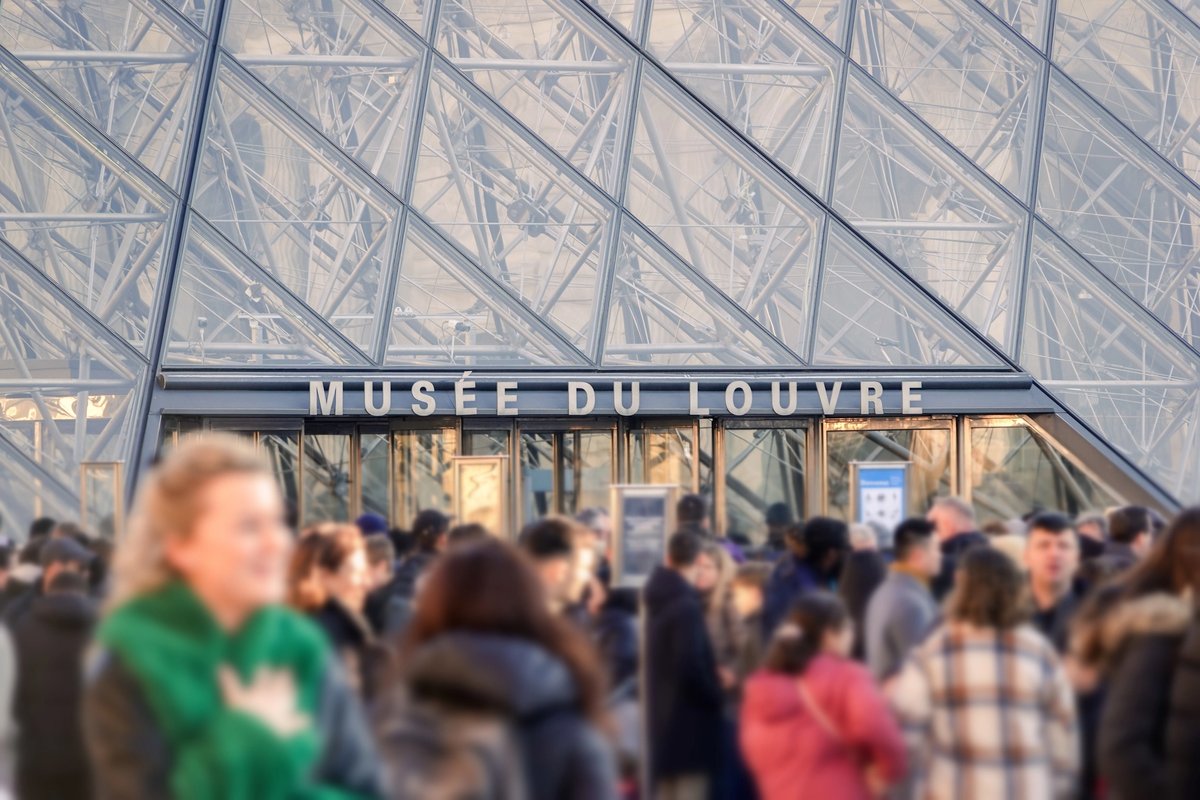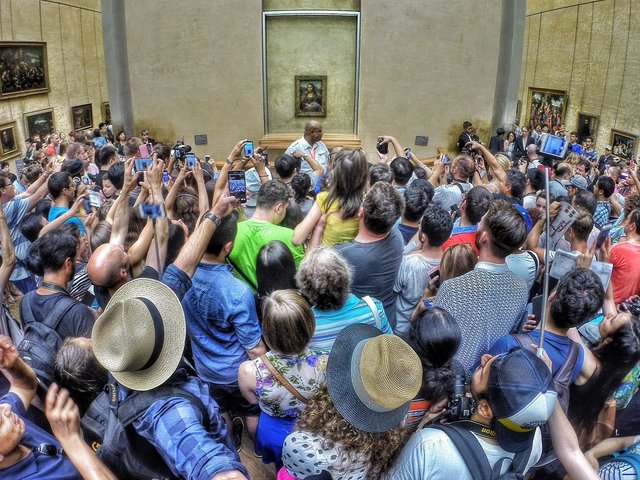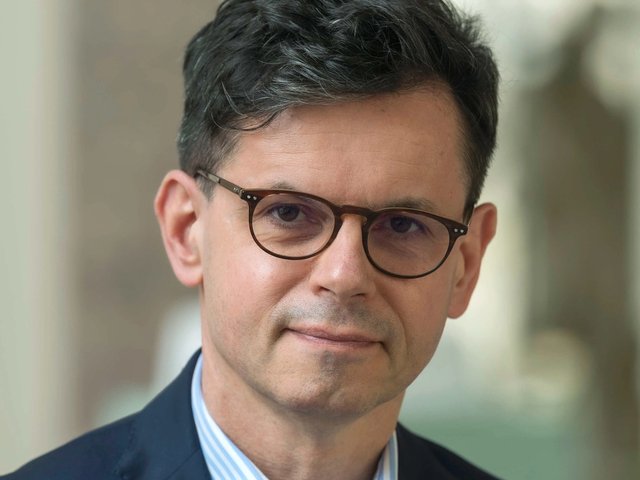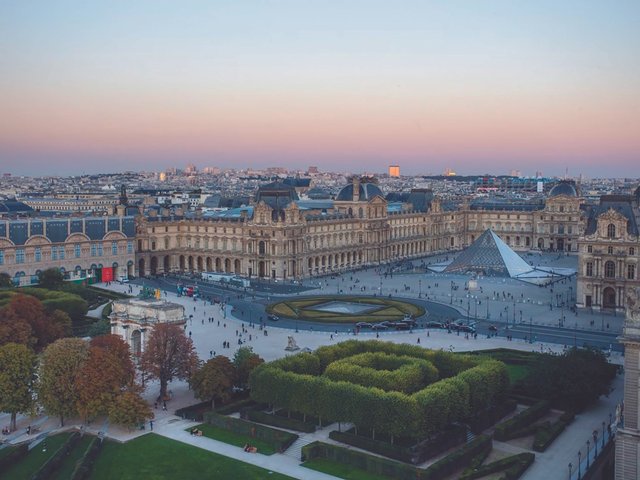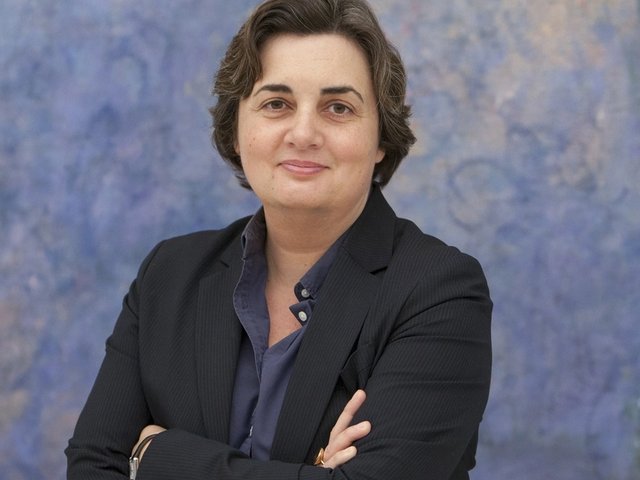When Paris’s public museums published their annual visitor figures in January, it was another bright day for cultural outreach—but a bit too bright for some. “8.7 million entries to the Louvre, 4.9 to Orsay and the Orangerie, 3.2 to Pompidou,” wrote one journalist. “Are Parisian museums overheating?”
Pundits have been quick to make the connection between over-tourism in the Calanques national park, or Venice, or Rome, or Amsterdam, and the high museum attendance in the French capital. But unlike exasperated locals and stressed-out fire department heads, if you’re a museum director, it is built into your DNA to only ever celebrate an influx.
Mission: maximum
Sylvain Amic, the president of the Établissement public des musées d’Orsay et de l’Orangerie (the governmental body that oversees both institutions) since April 2024, puts it plainly: “A museum’s mission is to radiate—to make known and to share its collections with the greatest number of people—so there is a contradiction in the idea of needing to limit how many can come.”
Of course, just weeks after those 2024 reports were filed, the world found out in uncharacteristically bald terms why Laurence des Cars has sought to impose daily limits on Louvre tickets since she took charge in 2021. In a leaked memo to the minister of culture, Rachida Dati, published in Le Parisien newspaper, Des Cars described, with startling candour, the state of the museum she oversees: “Substantial structural damage in at times very degraded spaces”, “obsolete technical apparatus”, “spaces that variously leak or sustain worrying temperature variations, which threaten the conservation of the artworks”. Visiting the Louvre, she said, was “a physical ordeal”. In particular, the bottleneck around the Mona Lisa—which is exhibited without interpretation—to her mind challenges the very mission of public service with which a museum is tasked.
The question is, then, whether the French capital’s cultural palaces really are being overrun by visitors—and what they are doing to shore up their success.
Category of its own
Claire Bernardi, the director of the Musée de l’Orangerie since 2022, says that while over-attendance is “a real question” that she and her colleagues across Paris are thinking about, she is not worried. Neither, it turns out, are the directors of the recently reopened Grand Palais, the Petit Palais, and Amic, in relation to the Musée d’Orsay itself. All concur that the Louvre is in a category of its own, and that their collective primary mission is to figure out how to best welcome all the people who want to visit.
“We’re at a moment of equilibrium,” says Bernardi. “We do need to be careful. But, right now, my first reaction is to rejoice in so many people coming to the museum, in culture still being a motor that drives people. Whether they’re Parisians or French residents or Europeans or international tourists, they come to walk along the Seine and they go into the museums, too.”
This starts with making the buildings work. At the Orangerie, Bernardi is overseeing extensive renovation works, precipitated, she says, by “a very simple observation”: “When the museum reopened in 2006, after Olivier Brochet’s successful renovation, the maximum number of people anticipated was about 600,000 annually. Today, the actual figure stands at 1.2 million.” The Musée de l’Orangerie is, as she puts it, a big museum in a little museum building.
Olympics hiccup
If her predecessor Cécile Debray successfully grew the museum’s audience from 938,000 in 2017 (the year she took office) to just over a million in 2019, Bernardi now just wants to keep things steady. The much-feared dip triggered by the 2024 Summer Olympics, meanwhile, turned out to be extremely short-lived: “The visitors came right back the day after the games ended,” Bernardi says.
Similarly, Amic says the building works the Musée d’Orsay recently embarked on, set for completion in 2028, are “not to make the museum bigger but to better welcome people.” The d’Orsay made headlines in 2023 for hitting an all-time high with 3,871,000 visitors, a startling 18% more than the year before. The latest 2024 figure is slightly lower at 3,751,000 but, as Amic points out, is still not far off the roughly four million people the museum welcomed in the first 12 months after opening in December 1986: a quite remarkable 40-year consistency.
In early 1987, the museum was seeing the same average daily flow it sees now, of 10,000-12,000 people, with up to 19,000 at peak moments. “It’s true that those peak moments can be unpleasant for the public, in certain spaces,” says Amic. With the maximum set at 22,000, the goal is to constantly reappraise where people like to go and what can be done to make their journey better.
International exposure
In some instances, making the building work means shuttering it entirely. The Grand Palais closed between 2021 and 2024 for the kind of exhilarating makeover that had architectural experts and future visitors alike swooning with delight. Doing so was, as its deputy director Christophe Chauffour says, a means for boosting visitor counts. “Until now, we had a relatively small international audience, between 10% to 15% for our exhibitions, despite being on the Champs-Élysées,” he says. “We now have 3,000 square metres of space accessible free of charge. We’re also going to constantly have an exhibition open to the public.” And with that spectacular nave, the building has roughly doubled the number of people it can accommodate—allowing for international events including Art Basel.
Programming is the second priority. With Claude Monet’s eight Water Lillies on permanent display in the twin custom-built oval rooms downstairs, the Orangerie has its own potential bottleneck. “One day,” says Amic, “if numbers keep rising as they are today, we’ll have to have a think.” But for now, there is still no need for timed or limited ticket purchasing, largely because the temporary exhibition programme, along with the remarkable Walter-Guillaume Collection of turn-of-the-century Modern painting, serves to relieve the pressure.
“We are sometimes surprised,” says Amic. “The 2024 exhibition Robert Ryman: The act of looking, which is, after all, very contemporary and therefore the preserve of a particular audience, got 400,000 visitors. Of course, they came for the Water Lillies, not for Robert Ryman, but they stayed for everything.”
Diversification drive
The Petit Palais saw out 2024 with a total of 1.4 million visitors, its highest attendance recorded since reopening in 2005. The institution’s director, Annick Lemoine, says this growth is the result of a long-term approach to diversifying its audience. More than 550,000 people came to see last year’s We Are Here street-art show and discovered the wider museum. “During the Olympics, we were the only museum to really come out on top of things: 70% of our visitors came for the games and discovered the museum. We were very well positioned geographically and, it has to be emphasised, our permanent collections are free.”
This raises the fundamental question of funding at a time when the government’s purse strings are notoriously tight. The Petit Palais’s fresco renovation is being financed, Lemoine says, by a generous private patron. She is also at great pains to highlight the substantial support all the museum’s renovation projects and ongoing maintenance benefit from as part of the Paris Musées grouping.
In this context, the Centre Pompidou proves instructive. At 3.2 million, its attendance in 2024 marks a 22% increase year-on-year. Both the strikes that crippled its operations and programming that one journalist described as “dedicated to artists the public simply doesn’t know about, like Germaine Richier” have been highlighted as reasons for 2023’s lacklustre performance.
Renovation costs
The Pompidou is set to close after the summer for five years for a complete renovation estimated at €262m, covered by government funds. In 2025, the centre will move, temporarily, into part of the Grand Palais, whose own restoration has just cost €466m, of which €288m (61%) was funded by the government.
And President Emmanuel Macron, in response to Des Cars’s plea, has of course committed to his Nouvelle Renaissance plans for overhauling the Louvre: plans that he estimates will cost €700m-€800m but which several sources have previously told The Art Newspaper could run as high as €1bn, 30% more than what it has cost to rebuild Notre-Dame.
Museums across the board are considering the same kind of differentiated tariffs that the Louvre is set to implement, with non-Europeans being charged more than Europeans. None of the museum directors The Art Newspaper has spoken to will confirm whether this is designed to limit visitor counts or raise funds, as part of the imperative that all museums have to ramp up self-funding initiatives.
One thing is clear, however. If Paris’s museums are flourishing, there is no doubt that the French state remains, all things considered, an important source of nourishment.


